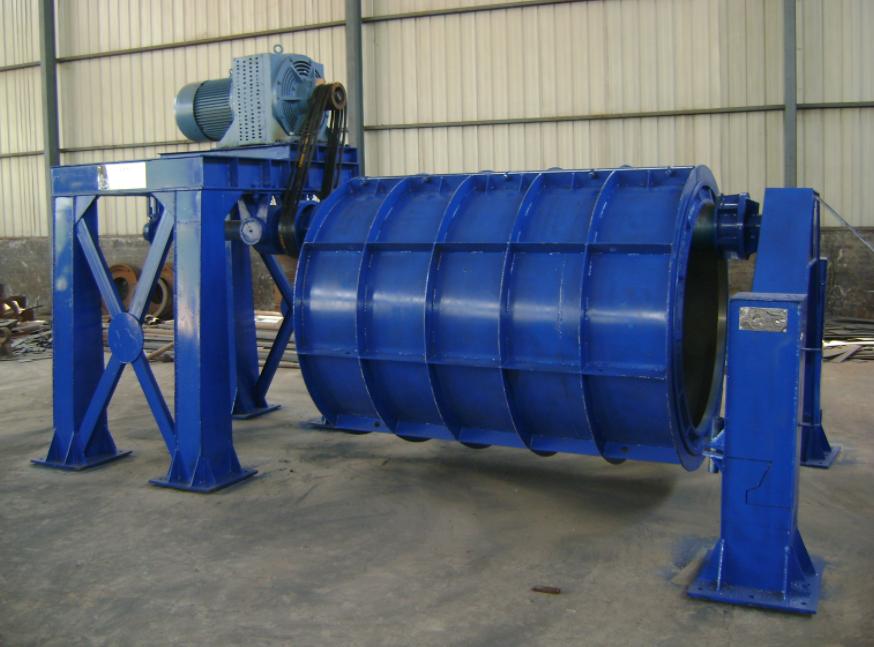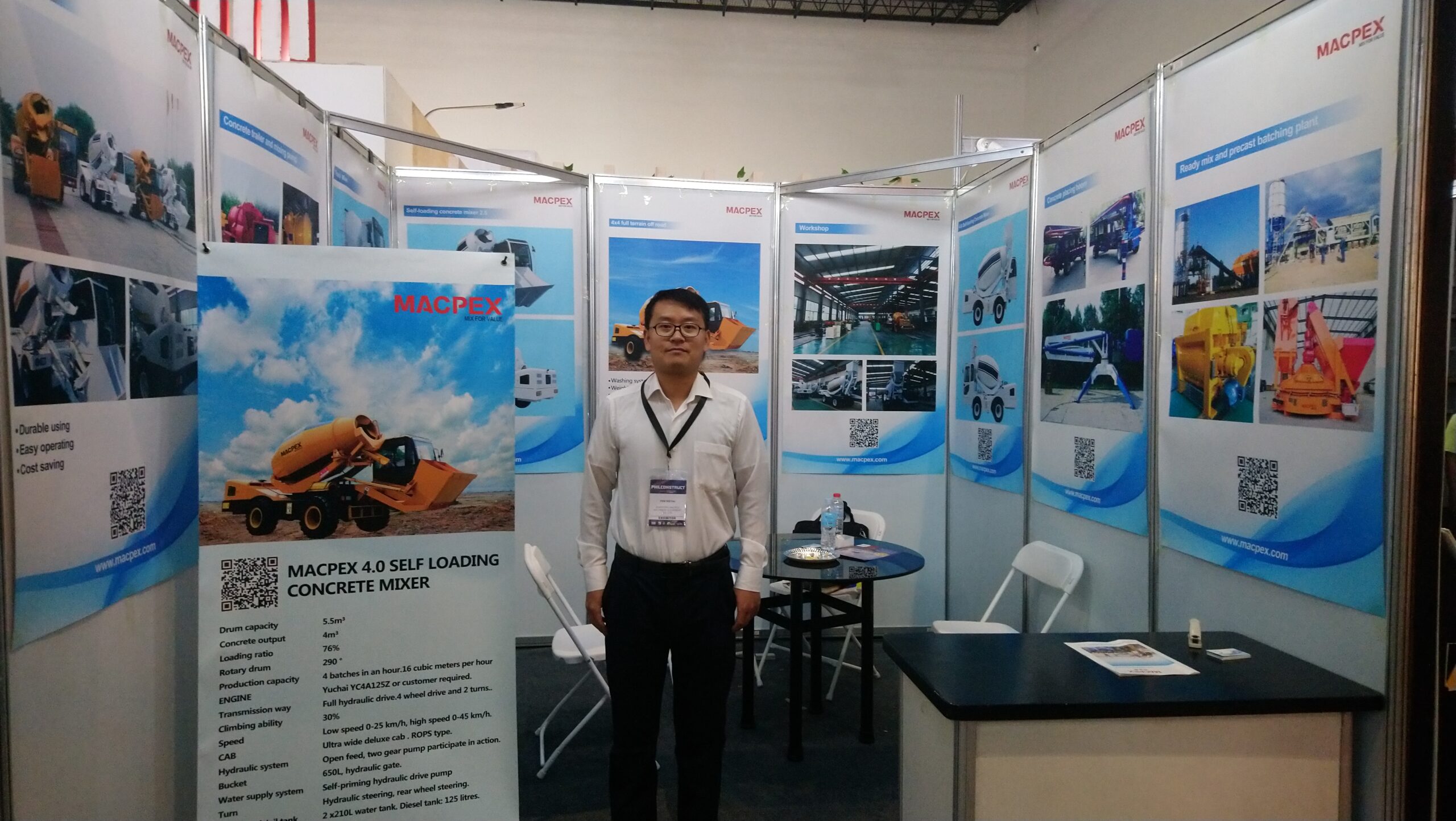The suspension roller machine was invented by the Australian “crowra” company in 1943. It is the main equipment for producing cement pipes and reinforced concrete drainage pipes. At present, the manufacture of cement pipe by suspended roller is still dominant in China. Taking the existing equipment and process of a pipe factory as an example, this paper first introduces the production process of suspended roller cement pipe, and then introduces its electrical control.
1. Production process flow of suspension roller unit
The production process flow of suspension roller unit is shown in Figure 1. The production process equipment is composed of cement silo, gravel silo, hopper car and winch, concrete mixer, transportation belt and belt conveyor mobile trolley, hanging roll pipe making machine.
The production process flow is as follows: first load the concrete mixer, and turn on the cement and gravel belt feeder. Cement and gravel fall into the hopper car. Stop feeding when the hopper car is full. Start the winch of the hopper car to transport the materials to the receiving hopper of the concrete mixer. Stop feeding after the concrete mixer is loaded. Then start the concrete mixer. After the concrete is mixed, drive the belt conveyor to move the trolley. Transport the belt conveyor to the lower part of the mold center suspended by the suspension roller. Then open the belt conveyor and the hanging roll pipe making machine. Open the discharge port of the mixer, and the mixed concrete flows into the moving belt and is transported to the cement pipe mold. At the initial stage of pipe making, the speed of the suspension roller shall be slightly slower and slowly increased. During the operation of the hanging roll pipe making machine, firstly, the main shaft drives the die to rotate with the help of the friction between the rolling ring at both ends of the die sleeved on the main shaft and the main shaft. The materials in the mold are distributed on the inner wall of the mold under the action of centrifugal force and friction on the inner wall of the mold. The material is added to a certain extent and then initially formed. Continue feeding to make the density in the pipe higher and higher. After feeding, make the mold and cement pipe rotate at high speed. Under the combined action of roller pressure and centrifugal force, the compactness of the cement pipe meets the requirements, and the cement pipe is formed. Then, drive the moving belt outside the hanging roll pipe making machine. Hang the mold and cement pipe with gantry crane, and then remove and remove the roller shaft. Use the gantry crane to lift the mold and cement pipe to the open space and let the cement pipe dry naturally. After the cement pipe is dried, the mold is removed, and the cement pipe is formed into a finished product.
2. Electrical control
(1) Main circuit
The main circuit of electrical control of suspension roller unit is shown in Figure 2. There are seven motors in the unit. The hopper car, winch, mobile belt conveyor trolley and concrete mixer need to operate in forward and reverse directions. Other motors only need to run forward. The driving motor of the hanging roll pipe making machine is an electromagnetic speed regulating motor, with a rated power of 90kw and y– Δ Mode start. Other motor powers are: Cement feeding belt and gravel feeding belt 2.2kW, winch 4kw, concrete mixer 7.5kW, belt conveyor 2.2kW and mobile trolley 2.2kW. The total installed capacity of the unit is 110.3kw.
The models and specifications of electrical components in Figure 2 are as follows: circuit breaker: QF1 is dz20y-400 / 3300 (in = 250A), QF2 is dz20y-225 / 3300 (in = 160A), QF3, QF4, QF6 and qf7 are dz47-d10 / 3P, and qf5 is dz47-d25 / 3p. Contactors: KM1 and KM3 are cj20-160 (coil AC220V), and km2 is CJ20-100 (coil AC220V). Km4, km5, KM6, KM7, km8, km9 and km10 are cj20-25 (coil AC220V), km11 and km12 are cj20-40 (coil AC220V). Thermal relay FR1 is jr36-160 (100-160a), jr2, jr3, jr4, jr5 and jr6 are JR36-20 (4.5-7.2a), and jr7 is jr36-32 (14-22a).
(2) Control circuit
The electrical control circuit of the suspension roller unit is shown in Figure 3. The electrical control principle is described as follows: the hanging roll pipe making machine is driven by 90kw electromagnetic speed regulating motor. The clutch coil is supplied with voltage regulation and speed regulation by the electromagnetic speed regulation controller jdla-90, with negative speed feedback. The start / stop of cement and gravel feeding belt is controlled by button. The feeding winch is controlled by the button to move the charging car up and down. After the contactor is pulled in, the start button will not be self-locking. Because of short stroke and short feeding time, manual button control is adopted. Mobile belt, mobile trolley and concrete mixer are all controlled by buttons, but with self-locking. All buttons are installed beside the machine. All motor overload protection is undertaken by thermal relay.


